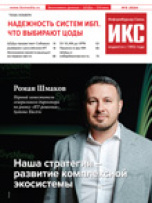| Рубрикатор |  |
 |
| Все новости |  |
World News |  |
 |
White House provides portal for multimedia revolution
| 19 февраля 2009 |
Four weeks after coming to power on the back of what was widely dubbed the first internet election campaign, Barack Obama is establishing himself as the first truly multimedia president.
The president’s use of the full span of media – from network news to webcasts – has echoes of Franklin D. Roosevelt’s “fireside chats” in the radio age and the mastery of television shown by John F. Kennedy.
The White House this week launched a site called Recovery.gov to track where stimulus money will be spent, calling it an “unprecedented step to increase transparency in government”.
The initiative followed an overhaul of the White House home page, featuring blog entries, policy details and “behind the scenes” photographs, as well as regular presidential addresses on YouTube, the video-sharing site.
The e-mail address list assembled by the Obama campaign before the election is being used to rally support for policy moves now he is in office.
An e-mail under his name this month went to subscribers with the message: “I need your help to spread the word and build support . . . Join thousands of people across the country by hosting or attending an economic recovery house meeting this weekend.”
While such use of new media devices has been highlighted, analysts and advertising executives have also been struck by the president’s use of “old” media tools such as prime-time television.
“He has revitalised the bully pulpit,” said Harris Diamond, of Interpublic’s constituency management group. “He is the first president who’s using all the tools of communication.”
Mr Obama’s first prime-time press conference drew an audience of 49.5m – bigger than the 37.8m-strong crowd for his inauguration and the 33.6m who tuned in for his mould-breaking 30-minute television advertisement in the days before the election.
The hour-long press conference, aired on eight networks, had historical parallels: Bill Clinton’s first prime-time news conference after his 1993 inauguration drew 64.3m viewers, albeit at a time when cable penetration was lower and US televisions received, on average, a third as many channels as they do today.
However, Mr Obama’s appearance was accompanied by a flurry of activity in other media, including e-mails from his Organising for America campaign asking supporters to share their stories about the economic crisis.
An analysis of his campaign by Mediaedge:cia, the Omnicom-owned media agency, found that, despite the attention paid to his internet spending, Mr Obama devoted 87 per cent on his funds to traditional television advertising.
The new president has offered himself up for innumerable television newscasts, from his first appearance on the Al Arabiyah channel to a rapid-fire round of interviews to take responsibility for Tom Daschle’s withdrawal as nominee for health secretary.
He has also popped up on less traditional podiums, such as a Sunday night all-star basketball game and an ESPN documentary for black history month, hosted off-the-record briefings for newspaper columnists and provided access to magazine feature writers for endless cover stories.
“He’s doing what every CEO of every company should be doing. You’ve got to be talking to people, because when you stop talking to people they start to assume the worst,” said Antony Young, of Optimedia, the Publicis-owned media planning group.
One medium seems to have eluded the president, however. Talk radio remained “the preserve of the right,” Mr Diamond said. Cracking that may be more challenging.
Источник: Financial Times
Читайте также:
От Rutube до Muztube: как в России развиваются отечественные видеохостинги
Госдума не рассматривает вопрос запрета YouTube в России
Русскоговорящие мошенники массово атакуют криптоинвесторов из Европы и США
На YouTube появились видео с опасным зловредом
Google оштрафован за повторное неудаление запрещенной информации















Оставить свой комментарий:
Комментарии по материалу
Данный материал еще не комментировался.